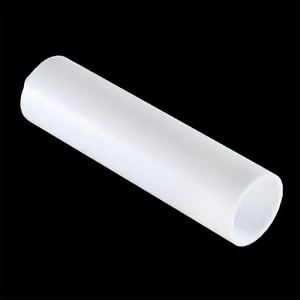Understanding PTFE Tube Insertion Techniques
PTFE, or polytetrafluoroethylene, is a versatile polymer used in various applications due to its exceptional chemical resistance and low friction properties. Whether you’re working on a 3D printer setup like the Prusa or involved in fluid systems, understanding the correct techniques for PTFE tube insertion is crucial. This guide will provide you with the necessary steps and considerations for successful PTFE tube installation.
PTFE tubes are prized for their ability to withstand high temperatures and corrosive environments. These characteristics make them ideal for a wide range of applications, including fluid systems, chemical processing, and 3D printing. Their non-stick properties also make them excellent choices for systems requiring smooth material flow.
Before you begin the PTFE tube insertion process, gathering the right tools and materials is essential. You will need:
- The PTFE tube of the correct diameter and length
- Appropriate PTFE tube fittings
- A tube cutter for clean edges
- A heat source if necessary for shaping
Ensure that the tube and fittings are compatible with your system specifications to avoid any mismatches.
Step-by-Step Guide to PTFE Tube Insertion
Step 1: Measure and Cut
Accurate measurements are critical. Measure the required length of PTFE tubing needed for your setup. Use a tube cutter to ensure a clean, straight edge, which will facilitate a snug fit with the fittings.
Step 2: Check the Fit
Before installing, check the fit of the PTFE tube with the fittings. The tube should slide in smoothly without excessive force. If the fit is too tight, consider using a lubricant or slightly expanding the tube end with gentle heat.
Installing PTFE Tubing
Step 3: Insert the Tube
Gently insert the PTFE tube into the fitting. Apply steady pressure, ensuring that the tube is not bent or kinked during insertion. For systems with tight spaces, use a guide to keep the tube straight.
Step 4: Secure the Connection
Once inserted, secure the connection by tightening the fitting. Ensure there is no play between the tube and fitting, as this could lead to leaks or system inefficiencies. For high-pressure applications, double-check all connections to ensure they are sealed tightly.
Tips for Successful PTFE Tube Installation
- Avoid Overheating: While PTFE tubes can withstand heat, overheating can cause deformation. Use heat sparingly and only when necessary for fitting adjustments.
- Regular Maintenance: Periodically check the fittings and tubes for signs of wear or leaks, especially in high-use systems.
- Consult Manuals: Always refer to the manufacturer’s instructions for specific installation guidelines related to your PTFE tubing application.
Understanding and implementing proper PTFE tube insertion techniques will enhance the efficiency and longevity of your systems. Whether you’re a hobbyist or a professional, these steps will guide you through a smooth installation process. For additional insights or troubleshooting tips, feel free to consult technical guides or reach out to experts in the field.








